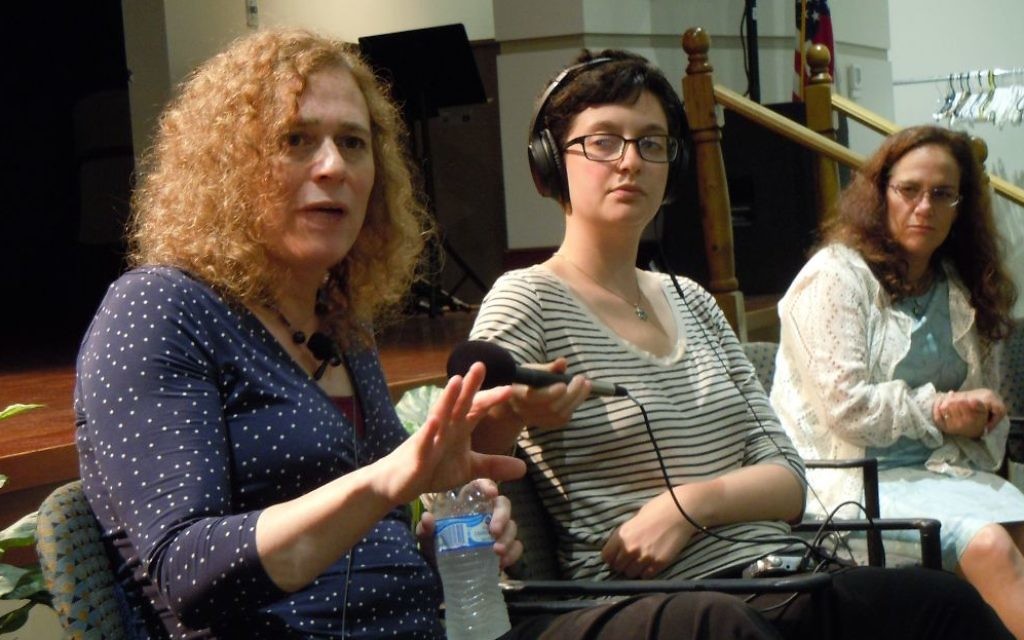Identity Breaks out of the Box
Joy Ladin helps us see that talking about Jewishness can shine a light on gender, and vice versa.

Judaism is full of binaries — boy/girl, kosher/nonkosher, leavened/unleavened, Jew/non-Jew — but the gray areas and exceptions discussed since ancient times shine a light on questions of identity that arise in modern conversations about gender.
“Reality itself is never binary, so binaries are always fragile and are always breaking down,” Joy Ladin said at a gathering of about 30 Jewish Atlantans on Aug. 17 at the Selig Center. Ladin, a Yeshiva University literature professor who holds the distinction of being the first openly transgender person employed by an Orthodox institution, led a discussion sponsored by SOJOURN, Jewish Family & Career Services and the Jewish Federation of Greater Atlanta.
The event came at the end of her three-day speaking tour of Atlanta and Birmingham and eight days before President Donald Trump ordered the Pentagon to implement his ban on trans recruits.
Get The AJT Newsletter by email and never miss our top stories Free Sign Up
After some 150 talks on gender, Ladin wanted to try something different, so we talked about identity.
But Ladin also explained that gender is a fundamental element of identity. She made two key points:
- Gender is a marker of humanity. Animals have physical differences between the sexes but no sense of gender; that is, as far as we know, no physically male giraffe feels that it’s female.
- The two ways people identify us throughout our lives are name and gender. So when Jay Ladin publicly becomes Joy Ladin, she is unmoored from a lifelong identity, and everyone who has known her no longer knows how to relate to her.
“Identities are things we do together,” she said.
Throw in a few more gender-related issues — how trans people, who are fighting for acceptance of multiple variations of gender, resort to their own binary of transgender vs. cis-gender, for example, and how the voice, which doesn’t change for an adult regardless of hormones or genitalia, is a particular problem — and we had plenty of fascinating material to interest and educate our small gathering.
Then Ladin took us in a different direction by turning to Jewish identity.
Her eyes were opened when she taught a class at Yeshiva on Jewish American literature. Her students, all presumably Orthodox, couldn’t imagine non-Orthodox American Jews, so they projected Orthodox actions, practices and motivations onto every Jewish character.
When Ladin asked them what it meant to be Jewish, they answered with stories.
“For them, being Jewish was a lifelong story,” Ladin said. “It wasn’t a noun or a fixed thing.”
She asked volunteers at the Selig Center meeting to share their Jewish stories, and they were amazing.
I expected stories of increasing or decreasing levels of observance, of movement among the Jewish denominations, of interfaith marriage and struggles over matrilineal descent, and we heard aspects of those Jewish identity issues.
We also heard about struggles related to nationality and politics. We heard about families moving into and out of Jewish faith and practice. We heard about the links between gender and Jewish identities from a self-described “transgressadox” Jew, and we heard from a young woman who found that her Jewish identity was strengthened by going to a West Virginia university and finding herself treated as “the Jew” representing Judaism and Jewishness to all those around her.
All of which reminded us about the parallels between Jewish identity and gender identity in terms of complexity and the difficulty of applying labels.
“We see gender not as a noun or boxes,” Ladin said, “but as a series of stories.”




comments